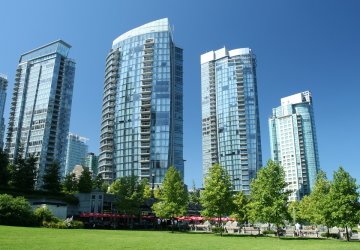
While cost savings will always be an important factor for corporate real estate and facility management professionals, I would like to argue that ‘occupant comfort’ is the most important benefit of implementing smart building technology.
Smart building technologies produce large amounts of data, describing the status and behaviour of systems and assets in buildings. A new generation of innovative smart building platforms (offered by vendors like Schneider Electric, Siemens, Honeywell and more) collect this data from multiple sources and ultimately transform data into diagnostics. These diagnostics include insights into actions that could or need to be taken to prevent failure. Diagnostics also describe the potential impact on cost savings, energy consumption and occupant comfort when executing them.
A recently published white paper describes how integrating a smart building platform with an Integrated Workplace Management System (IWMS) allows organisations to exploit and realise the most value from their portfolio for both their business and its occupants. The white paper focuses on the role of smart building data in operations and maintenance. Sounds interesting? You can download it now for free.
Employee wellbeing
According to Verdantix, improving employee wellbeing continues to trump cost efficiency in real estate strategy in 2020, with 28% of corporate real estate leaders placing it as their top objective.
In fact, this reminds me of an article that David Karpook published in Facility Executive back in 2016, titled ‘Smart Buildings: It’s Still About The People Inside.’ As we approach 2020, it is still about the people inside – it will always be about the people inside. As David wrote in his article:
‘However, no matter what the benefits and challenges are, the future of smart buildings is ultimately all about the people inside. Innovations must be about making buildings more comfortable, safe, and attractive to the occupants. If a building has no occupants, what is the motivation for improvement? On a similar note, if a business isn’t taking into account how its office environment is affecting its workers, it’s missing out on huge opportunities to improve its recruiting and brand loyalty efforts.’
The future of smart buildings
In David’s article, he concluded with what he thought was the future of smart buildings:
‘The smartest buildings of the future will be those designed with people in mind. In an age where data collection is everywhere, it’s important to realise measuring occupants’ responses to the building is just as important as the building being able to measure on its own how the light and heat are performing. Buildings designed to maximise space must also take into account how people feel within that space.’
‘Employers that can offer a smart building experience, can look forward to the cost and energy savings those buildings produce, but also to a happier, more engaged and productive workforce that resides inside.’
Employee happiness is heavily influenced by the level of control they have over their work environment: from technology to comfortable working spaces to higher-level decision making. This degree of control can be strongly influenced by the use of smart building technology.
A recent JLL and CoreNet Global survey found that 85% of executives believe smart building solutions can directly benefit employee satisfaction and similarly impact productivity (JLL, 2019). Think about some of the most common workplace irritations:
- Work areas that are too hot or too cold
- Technology issues with presentations or conference calls
- Battles over conference room space
It has been almost four years since David wrote this article, and the future he described is closer than you might expect. When thinking about how to implement smart building technology, always keep the employees in mind.





















